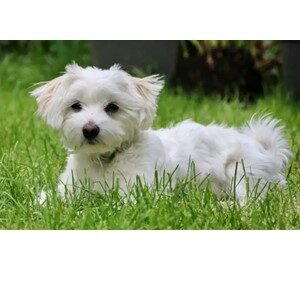Maltese Dog Bed
Make Your Maltese Comfortable with a Bed!
Introduction
The Maltese dog bed takes into account their sleeping position, health concerns, and preferences. Because of their size, orthopedic memory foam beds are best.
The Maltese is a charming, elegant toy breed known for its silky white coat and affectionate nature. One of the oldest dog breeds in existence, the Maltese has a long history of being beloved by royalty and aristocrats.
Originating from the Mediterranean region over 2,000 years ago, this breed has retained its popularity due to its endearing personality, graceful appearance, and adaptability. Despite its small size, usually weighing between 4 to 7 pounds, the Maltese is known for its bold and lively demeanor.
They make excellent companions for individuals, families, and seniors alike, offering loyalty and affection in abundance. The Maltese is not just a pretty face—they are intelligent and relatively easy to train, though their stubborn streak can sometimes present a challenge.
Their hypoallergenic coat makes them a good option for allergy sufferers, though their grooming needs are quite extensive. A well-cared-for Maltese can live for 12 to 15 years or more, making them a long-term companion.
New owners should be aware of the breed’s common health concerns, including dental issues and patellar luxation, as well as their tendency toward separation anxiety. Despite these challenges, Maltese dogs are loving, playful, and devoted, often thriving in homes where they can receive lots of attention and love.
In this guide, we share information that new owners may not know about. The topics covered are best dog beds, best brands, facts and fun facts, health issues, behavior concerns, tips for new owners, costs of ownership, and safe foods and foods to avoid.
Video: Things You Should Not Do
This video shows owners what they should not do with their Maltese dog.
Best Dog Bed Types and Brands
Here are the best dog bed types and recommended brands for Maltese dogs that you can share with new owners:
Best Dog Bed Types for Maltese
- Orthopedic Beds: Maltese are prone to joint issues like patellar luxation, so orthopedic beds provide extra support for their joints and muscles. These beds typically use memory foam or other supportive materials, offering comfort, especially for older dogs.
When shopping for a memory foam dog bed, be sure to look for the CertiPUR-US seal. The seal means that the materials used do not contain any chemicals or toxins that are harmful to humans or pets.
- Bolster Beds: Bolster beds, with raised edges, offer a sense of security and are perfect for Maltese who like to snuggle. The cushioned sides allow them to rest their heads comfortably while the center provides ample softness.
- Donut or Cuddler Beds: These round, plush beds with raised edges are great for Maltese dogs who like to curl up while they sleep. The cuddly design makes them feel warm and secure.
- Cooling Beds: Though Maltese have a low-shedding coat, they can sometimes overheat due to their small size. A cooling bed helps regulate body temperature, especially in warmer climates.
- Washable Beds: A bed with a removable, washable cover is essential for keeping it clean and odor-free, especially given the Maltese’s tendency for tear stains and skin sensitivities.
Best Dog Bed Brands for Maltese
- PetFusion Orthopedic Dog Bed This bed offers memory foam support and a durable, water-resistant cover. It’s perfect for dogs needing joint support and comfort.
- Best Friends by Sheri Original Calming Donut Bed Ideal for Maltese that love to curl up, this donut-shaped bed is ultra-soft and cozy, promoting relaxation and better sleep.
- Furhaven Orthopedic Bolster Bed With its supportive bolstered sides and orthopedic foam base, this bed is excellent for providing joint support and a comfortable place to rest.
- BarksBar Orthopedic Dog Bed This bed is designed with human-grade orthopedic foam and a bolster, perfect for Maltese dogs who need extra support and love to cuddle.
- MidWest Homes for Pets Deluxe Super Plush Bed This affordable option is soft, cozy, and easily fits into crates, providing a comforting sleeping area for your Maltese.
Conclusion:
When selecting a bed for a Maltese, comfort, support, and durability should be top priorities. Orthopedic and bolster beds offer excellent support, while plush donut beds provide warmth and security. Choosing a washable option will also make it easier to maintain cleanliness and hygiene for these small, affectionate dogs.
Facts and Fun Facts About Maltese Dogs
Measurements
- Breed Group: Toy
- Height (M & F): 7 – 9 inches
- Weight (M & F): Under 7 lbs.
- Length Male:5 – 17.5 inches
- Length Female:5 – 17.5 inches
- Fully Grown: 9 months
- Lifespan: 12 – 15 years
- Colors: White, White & Lemon, White & Tan
- Popularity: This breed is the 37th most popular dog in the United States according to the American Kennel Club for 2023.
- Intelligence: This breed is the 72nd most intelligent out of 130 dog breeds according to the Professor Stanley Coren at the University of British Columbia.
Facts and Fun Facts about Maltese Dogs
Here are 10 facts and 10 fun facts about the Maltese dog breed:
Facts about the Maltese
- Ancient Breed: The Maltese is one of the oldest toy breeds, with origins tracing back over 2,000 years to the Mediterranean region.
- Coat: Their long, silky, white coat is hypoallergenic, meaning they shed very little, making them suitable for people with allergies.
- Temperament: Maltese dogs are known for being affectionate, gentle, and great companions, especially for older adults or families with older children.
- Intelligence: They are highly intelligent and eager to learn, making them easy to train, although some can be a bit stubborn.
- Health: Common health issues include dental problems, patellar luxation, and white dog shaker syndrome.
- Exercise Needs: Despite their size, Maltese dogs are energetic and need daily walks and playtime to stay healthy.
- Watchdog Qualities: Maltese are alert and protective, often acting as good watchdogs, though they’re generally friendly.
- Grooming: Their long coats require regular grooming to prevent tangles and mats, often needing daily brushing.
- Saint Paul Was Reportedly Given a Maltese: According to legend, St. Paul was given a Maltese after he was shipwrecked on Malta. Why? He reportedly healed the father of the Roman governor, Publius. In gratitude, Publius gifted him with a beautiful dog.
- They’re a Truly Ancient Dog Breed: The history of the Maltese likely dates back to the Phoenicians, who brought the dog to Malta. The Greeks of the fourth and fifth century B.C. immortalized the breed in their art, while Aristotle described the Maltese as “perfectly proportioned.”
Fun Facts about the Maltese
- Royal Companions: Maltese dogs were favorites among European royalty, including Queen Elizabeth I and Marie Antoinette.
- Celebrity Pets: Famous owners of Maltese include Marilyn Monroe, Elizabeth Taylor, and Halle Berry.
- Ancient Popularity: Aristotle, the Greek philosopher, praised the breed, referring to them as “perfectly proportioned.”
- Survivors: During a dark period in history, the breed was nearly wiped out due to war but was saved and bred back to prominence by enthusiasts.
- Long-Lived: The oldest Maltese on record lived to be 20 years old!
- Nicknames: They are sometimes referred to as “Maltese Lion Dogs” due to their regal appearance and courage despite their size.
- Therapy Dogs: Maltese are often used as therapy dogs due to their gentle nature and ability to offer comfort.
- Dramatic Poses: In dog shows, Maltese are often shown walking with their flowing coat brushing the ground, which looks very elegant.
- Historical Healing Powers: In ancient times, people believed Maltese dogs had healing powers and placed them on sick people to help them recover.
- Agility Stars: Despite their delicate appearance, many Maltese dogs excel in agility competitions!
Health Conditions
Here are the most common health conditions that Maltese dogs may face:
1. Dental Problems: Maltese dogs are prone to dental issues such as gum disease and tooth decay. Regular teeth brushing and dental checkups are essential.
2. Patellar Luxation: This condition occurs when the kneecap (patella) slips out of place, causing discomfort or difficulty walking. It’s a common issue in small dog breeds.
3. Collapsed Trachea: Maltese are susceptible to tracheal collapse, where the windpipe narrows, causing coughing, difficulty breathing, or wheezing.
4. White Dog Shaker Syndrome: This neurological condition causes tremors in small, white dogs like the Maltese. It usually appears in young to middle-aged dogs and can be managed with medication.
5. Progressive Retinal Atrophy (PRA): PRA is a genetic condition that leads to gradual vision loss and can eventually result in blindness.
6. Portosystemic Shunt: This congenital condition affects the liver’s ability to filter toxins properly, leading to various symptoms, including poor growth, seizures, and lethargy. Surgery is often required to correct it.
7. Hypoglycemia: Maltese puppies, in particular, are at risk of low blood sugar levels, which can cause weakness, seizures, and even collapse.
8. Allergies: Maltese dogs can suffer from skin allergies, including food, environmental, or contact allergens, leading to itchiness, redness, and skin infections.
9. Ear Infections: Their long, floppy ears can trap moisture and bacteria, making them prone to ear infections, which may require frequent ear cleaning.
10. Heart Issues: Maltese can develop mitral valve disease, a heart condition that affects the valve’s ability to close properly, leading to heart murmurs and other complications.
Regular vet visits, a balanced diet, and preventive care can help manage or reduce the risk of these health conditions.
Behavior Concerns
Here’s a list of common Maltese behaviors to share with new owners:
1. Affectionate and Loyal: Maltese dogs are extremely loving and enjoy being close to their owners. They often form strong bonds and can be very clingy.
2. Alert and Vocal: Maltese can be quite alert and will often bark at unfamiliar noises or strangers, making them effective little watchdogs.
3. Playful and Energetic: Despite their small size, Maltese dogs are playful and energetic, enjoying interactive playtime and short bursts of activity throughout the day.
4. Separation Anxiety: Due to their attachment to their owners, Maltese are prone to separation anxiety if left alone for long periods. They may exhibit behaviors like barking, whining, or destructive behavior when anxious.
5. Stubborn at Times: Maltese are intelligent but can also be independent and stubborn, especially during training. Consistent and positive reinforcement works best.
6. Social and Friendly: Maltese are generally social dogs that get along well with other dogs and pets when properly socialized. They enjoy being around people and may thrive in a family environment.
7. Lively but Gentle: They are lively in play but gentle in nature, making them a good fit for homes with older children or calm environments.
8. Sensitive to Rough Handling: Due to their small size and delicate build, Maltese dogs can be sensitive to rough handling, so they may shy away from overly boisterous children or pets.
9. Eager to Please: Maltese enjoy pleasing their owners and respond well to positive reinforcement, praise and rewards during training sessions.
10. Adaptable: Maltese can adapt well to different living environments, whether in an apartment or a larger home, as long as they get attention and some exercise.
11. Treats: When using treats during their training sessions, be sure they do not exceed more than 10% of their daily caloric needs. This can result in your dog becoming obese, which is what you want to avoid.
Video: Common Behavior Problems
A great video showing common behavior problems with the Maltese. New owners should be prepared for a loving, but sometimes vocal and attention-seeking companion. Proper socialization and consistent training will help curb any negative behaviors.
New Owner Tips
Here are some useful tips to share with new Maltese dog owners:
1. Start Grooming Early: Maltese dogs have long, silky coats that need daily brushing to prevent mats and tangles. Start grooming them early to get them used to the process and consider professional grooming every 6-8 weeks.
2. Socialize from a Young Age: Introduce your Maltese to different environments, people, and other animals early on to help them develop good social skills. This will reduce anxiety and excessive barking around strangers or new situations.
3. Use Positive Reinforcement: Maltese dogs respond well to positive reinforcement training methods. Reward them with treats, praise, and affection for good behavior, and be patient with their sometimes-stubborn nature.
4. Watch for Separation Anxiety: Maltese are prone to separation anxiety. Gradually train them to be alone for short periods and provide toys or distractions when you’re away to keep them occupied.
5. Dental Care is Crucial: Maltese dogs are prone to dental problems, so brush their teeth regularly and provide dental chews or toys to maintain good oral health.
6. Keep an Eye on Their Weight: Maltese can gain weight easily due to their small size, so ensure they have a balanced diet and avoid overfeeding. Regular exercise, like daily walks and playtime, will help keep them fit.
7. Use a Harness for Walks: Due to their small size and potential for tracheal collapse, use a harness instead of a collar for walking to avoid putting pressure on their neck.
8. Be Gentle with Training: Maltese are sensitive and may not respond well to harsh corrections. Use a calm and gentle approach when training or disciplining them.
9. Monitor Their Health: Be aware of common Maltese health issues like patellar luxation, collapsed trachea, and dental disease. Regular vet checkups are key to catching any problems early.
10. Protect Their Coat: To keep their coat in top condition, you may want to trim the hair around their eyes to prevent irritation and keep them clean. Regular baths using a mild dog shampoo will also help maintain their beautiful coat.
By following these tips, new Maltese owners can provide the best care and create a loving environment for their new companion.
Costs of Ownership
Here’s a list of average costs associated with owning a Maltese that you can budget for if you are a new owner:
- Initial Purchase/Adoption:
- Breeder: $1,000 – $3,000, depending on pedigree and breeder reputation.
- Adoption: $100 – $500 from shelters or rescue organizations.
- Spaying/Neutering:
- $200 – $500, depending on the clinic and location.
- Vaccinations:
- Initial puppy vaccinations: $75 – $200.
- Annual booster shots: $50 – $100 per year.
- Microchipping:
- $25 – $50, typically done at the time of spaying/neutering or during routine vet visits.
- Regular Vet Checkups:
- $50 – $100 per visit, usually required annually or bi-annually.
- Yearly wellness exams and heartworm testing: $100 – $250 per year.
- Grooming:
- Professional grooming: $50 – $100 per session, needed every 6-8 weeks.
- Grooming tools (brushes, combs, shampoos): $30 – $100 initially.
- Food:
- Quality dog food: $20 – $50 per month, depending on brand and dietary needs.
- Dental Care:
- Dental cleaning (at the vet): $300 – $800 annually.
- Dental chews and toothbrush kits: $10 – $30 monthly.
- Training:
- Puppy obedience classes: $100 – $300 for a 6-8 week course.
- Private training sessions (if needed): $30 – $100 per session.
- Pet Insurance:
- $20 – $50 per month, depending on coverage and the dog’s age/health.
- Flea/Tick and Heartworm Prevention:
- Flea/tick prevention: $10 – $20 per month.
- Heartworm prevention: $5 – $15 per month.
- Toys and Accessories:
- Toys, leashes, collars, and beds: $100 – $200 annually.
- Miscellaneous:
- Boarding/pet sitting: $25 – $50 per day.
- Dog walking services: $10 – $25 per walk.
Estimated First-Year Cost:
- $1,500 – $5,000, depending on initial purchase, medical needs, and grooming preferences.
Estimated Annual Maintenance Costs:
- $800 – $2,000, including food, grooming, and routine vet care.
These estimates will vary depending on location and the individual dog’s needs. However, they provide a helpful range for new Maltese owners to plan their budget.
Safe Foods and Foods To Avoid
Here’s a list of safe and unsafe foods for Maltese dogs:
Safe Foods for Maltese Dogs
- Lean Meats (Chicken, Turkey, Beef, Lamb)
- Cooked, unseasoned, and boneless meat is a great source of protein.
- Fish (Salmon, Sardines)
- Cooked, boneless, and without added seasonings. Rich in omega-3 fatty acids, which are good for skin and coat health.
- Vegetables (Carrots, Green Beans, Sweet Potatoes, Peas)
- Cooked or raw, these veggies provide essential vitamins and fiber. Avoid adding salt or spices.
- Fruits (Blueberries, Apples, Bananas, Strawberries)
- These fruits are safe in moderation. Remove seeds and pits from apples.
- Rice and Oatmeal
- These are easy to digest and can be added to your dog’s food in small amounts.
- Eggs
- Cooked eggs (scrambled or boiled) are a great source of protein.
- Pumpkin
- Helps with digestion and can alleviate issues like diarrhea or constipation.
- Plain Yogurt
- A small amount of plain, unsweetened yogurt is a good source of probiotics.
- Peanut Butter (Unsalted, Unsweetened)
- A great occasional treat that provides healthy fats and protein. Make sure it’s free of xylitol.
Foods to Avoid for Maltese Dogs
- Chocolate
- Contains theobromine, which is toxic to dogs and can cause serious health issues.
- Grapes and Raisins
- These can cause kidney failure in dogs, even in small amounts.
- Onions and Garlic
- Both can damage a dog’s red blood cells and cause anemia.
- Avocado
- Contains persin, which can cause vomiting, diarrhea, and other health issues.
- Alcohol
- Even small amounts can be dangerous and cause alcohol poisoning in dogs.
- Caffeine (Coffee, Tea, Soda)
- Contains methylxanthines, which are toxic and can lead to rapid heart rate, tremors, and seizures.
- Xylitol
- This artificial sweetener is extremely toxic and can cause a rapid insulin release, leading to hypoglycemia, liver failure, or death.
- Macadamia Nuts
- These are highly toxic and can cause weakness, tremors, vomiting, and hyperthermia.
- Bones (Cooked)
- Cooked bones can splinter and cause choking or intestinal blockages.
- Raw Dough
-
- The yeast can expand in your dog’s stomach, causing bloating and potential life-threatening complications.
Always introduce new foods gradually and consult with your vet before adding anything to your Maltese’s diet, especially if they have any allergies or sensitivities.
Conclusion
The Maltese is a delightful breed, combining beauty, intelligence, and a loving personality into one small, elegant package. While they may be tiny in stature, their hearts and loyalty are vast. Their affectionate and sociable nature makes them ideal companions for those looking for a dog that thrives on human interaction.
However, prospective owners should be prepared for their grooming needs, which require daily brushing and regular professional grooming to maintain their signature silky coat. Grooming, while time-consuming, can also be a bonding experience between owner and dog, helping to reinforce the close relationship that the Maltese craves.
Additionally, Maltese dogs can be prone to certain health conditions, particularly dental problems, joint issues, and respiratory concerns. Regular vet checkups and preventive care are essential to keeping them healthy and happy.
Maltese are also prone to separation anxiety due to their deep attachment to their owners, so they are best suited for homes where someone can be with them for most of the day.
Training, socialization, and patience are key in ensuring that their occasional stubbornness does not hinder their overall behavior. Despite these challenges, the rewards of owning a Maltese far outweigh the efforts required.
For those looking for a small dog with a big heart, a Maltese may be the perfect choice. Their ability to bring joy and companionship into a home is undeniable, making them cherished pets for many.
Whether it’s their playful energy, regal appearance, or boundless affection, the Maltese has all the qualities to be a treasured member of the family for years to come.
You can read about our other dog breed information articles by clicking HERE!
Shop Dog Beds
You can shop for a dog bed by selecting a bed of interest. You will be taken to Amazon where you can place the order. While there, you can read the customer reviews and answered questions before purchasing. As an Amazon Associate, I earn from qualifying purchases. Your purchase price is the same as if you shop directly on Amazon. The price at time of publish is included below to give you an idea of what the price is; however, it is subject to change.
Cooling Gel Dog Beds
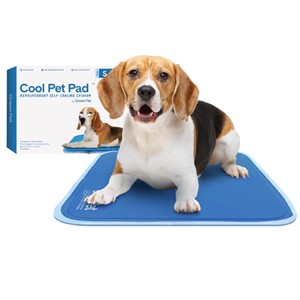
The Green Pet Shop Cooling Mat
Price At Time of Publish $40.00

MH MYLUNE HOME Self Cooling Mat
Price At Time of Publish $40.00
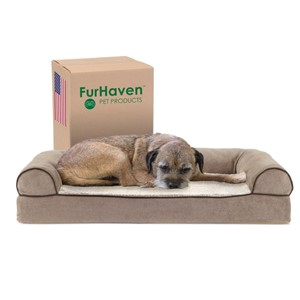
Furhaven Pet Products Cooling Gel Bolsters Small Bed
Price At Time of Publish $45.00

Furhaven Cooling Gel Medium Bed
Price At Time of Publish $42.00

ARF Pets Cooling Gel Pad
Price At Time of Publish $35.00
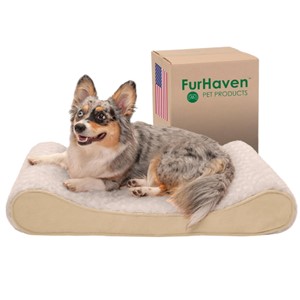
Furhaven Cooling Gel Small Bed
Price At Time of Publish $50.00
Price At Time of Publish $50.00
Orthopedic Dog Beds

PetFusion Orthopedic Dod Bed
Price At Time of Publish $80.00
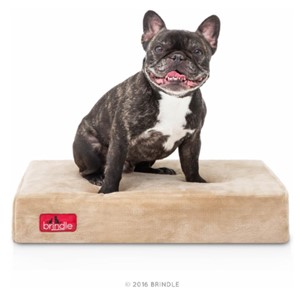
Brindle Orthopedic Bed Khaki
Price At Time of Publish $30.00
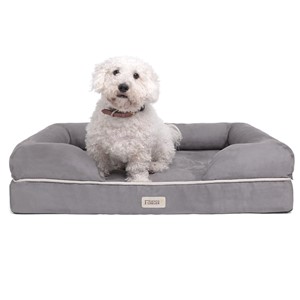
Friends Forever Orthopedic Bolster Bed
Price At Time of Publish $53.00

K9 Ballistics Tough Orthopedic Small Crate Bed
Price At Time of Publish $89.00

MidWest Homes Small Bolster Dog Bed
Price At Time of Publish $10.00
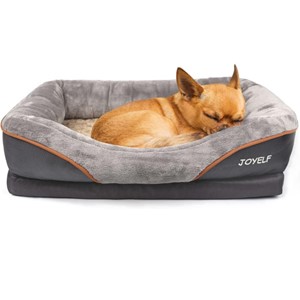
JOYELF Orthopedic Small Sofa Bed
Price At Time of Publish $40.00
Bolster Dog Beds

Furhaven Small-Medium Bolster Dog Bed
Price At Time of Publish $57.00
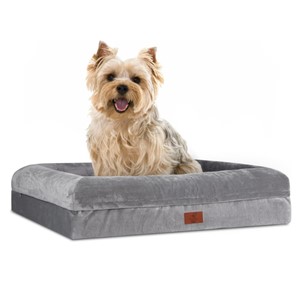
Yiruka Small Bolster Sofa Dog Bed
Price At Time of Publish $40.00

K&H Pet Products Bolster Crate Pad
Price At Time of Publish $22.00
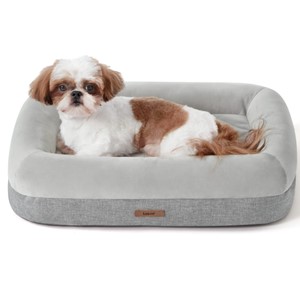
Leasure Small Bolster Dog Bed
Price At Time of Publish $40.00
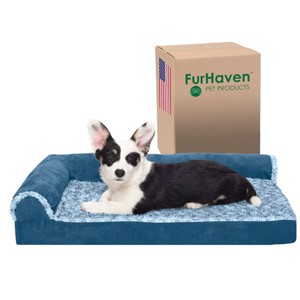
Furhaven Small-Medium L-Shaped Bed
Price At Time of Publish $39.00

Long Rich Bolster Small Bed
Price At Time of Publish $27.00
Elevated Dog Beds
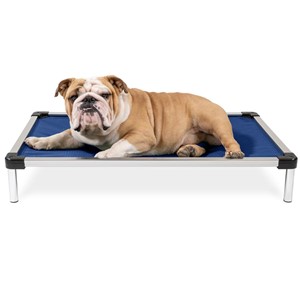
K9 Ballistics Chew Proof Elevated Small Bed
Price At Time of Publish $129.00
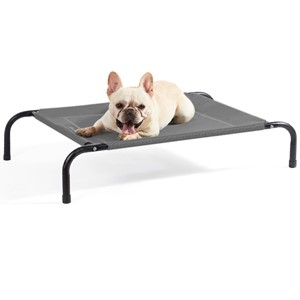
Bedsure Medium Elevated Dog Bed
Price At Time of Publish $33.00
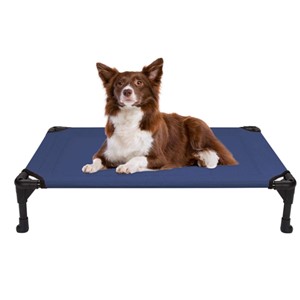
Veehoo Medium Elevated Dog Bed
Price At Time of Publish $45.00
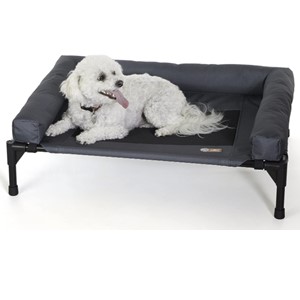
K&H Pet Products Elevated Bolster Dog Bed
Price At Time of Publish $57.00

Kuranda Elevated Chew Proof Small Dog Bed
Price At Time of Publish $134.00
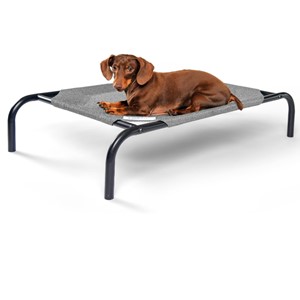
Coolaroo Small Elevated Dog Bed
Price At Time of Publish $21.00
Shop Cave/Donut Dog Beds

Snoozer Cozy Cave Bed
Price At Time of Publish $87.00
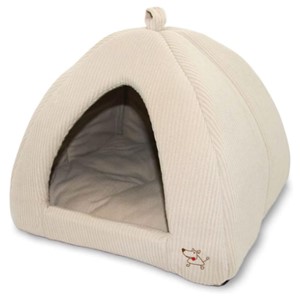
Best Pet Supplies Tent Bed
Price At Time of Publish $23.00
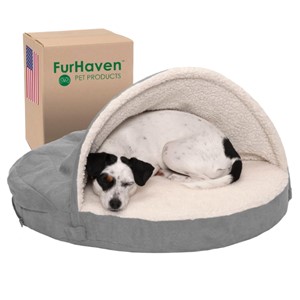
Furhaven Round Orthopedic Cave Bed
Price At Time of Publish $30.00

Best Friends by Sheri Original Calming Donut Bed
Price At Time of Publish $25.00
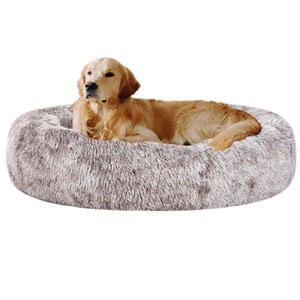
Coohom Oval Calming Donut Cuddler Bed
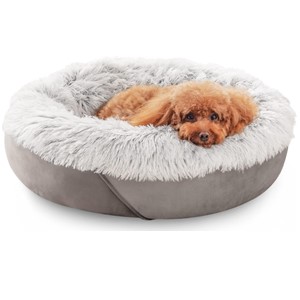
JOEJOY Calming Donut Small Dog Bed
Price At Time of Publish $33.00
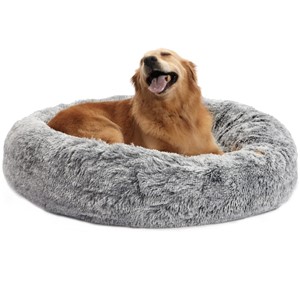
Bedfolks Calming Donut Dog Bed
Price At Time of Publish $66.00

Bedsure Medium Donut Dog Bed
Price At Time of Publish $36.00

Bedsure Medium Donut Dog Bed
Price At Time of Publish $40.00
Related Articles
Below are some other articles that might interest you. Just select one that you want to learn more about.
- Best Dog Training Toys
- Best Healthy Dog Food Brands
- Dog Training Techniques
- Feeding Dogs Different Life Stages
- How To Train A Puppy
- Positive Reinforcement for Dog Training
- Puppy Proofing Your House
- Using Alexa for Dog Behaviors
Go back to the Dog Luxury Beds home page.
